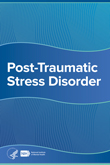1. Male
2. Never bedwet in any way - I have an ironclad bladder, and I'm trying to relax/lose some control when padded
3. Never tested for ASD but unlikely? Honestly, I wonder if I may be. I have a lot of anxiety about social things and am quite OCD about lots of things (apparently runs in the family). It's funny, I mentioned today like maybe I should get tested, but my parents said what would it change. Probably nothing.
I'm a severe introvert that has anxiety about doing things outside of work socially. I would rather just be home and hide in my room all day. Never had a partner or been on a date or even gotten a haircut alone. I don't drive, can't swim, etc. I overall regret my potty training, started with a fixation with messing that turned into up to 95%+ of the time I make BMs, I do it in my pants, since age 9/10.
I now wear 24/7 and don't use the potty.

There we go, that's my shtick.

 Feelings of Detachment After Trauma May Signal Worse Mental Health Outcomes
Feelings of Detachment After Trauma May Signal Worse Mental Health Outcomes Brain Activity Patterns After Trauma May Predict Long-Term Mental Health
Brain Activity Patterns After Trauma May Predict Long-Term Mental Health Brain Biomarkers Could Help Identify Risk of Severe PTSD
Brain Biomarkers Could Help Identify Risk of Severe PTSD